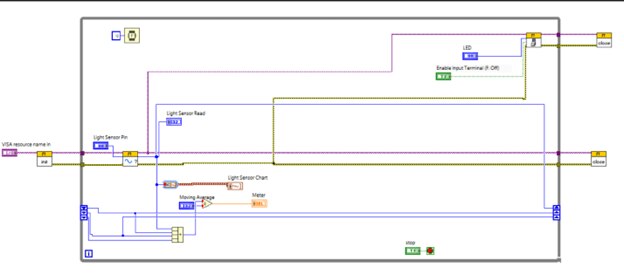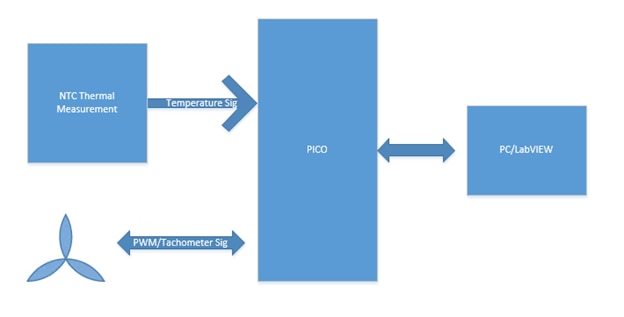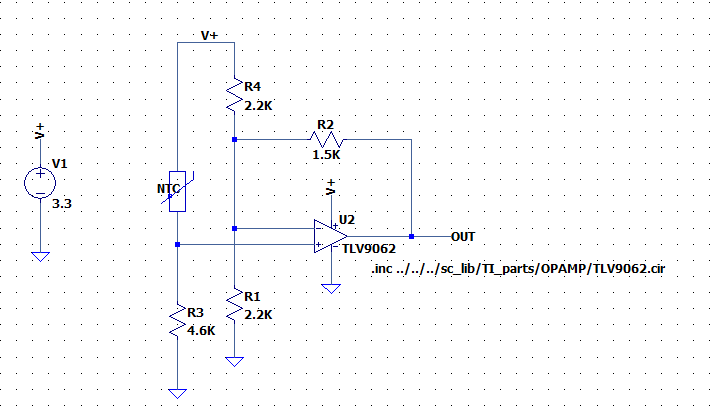Table of Contents
Introduction
LabVIEW is a graphical programming environment. It is a virtual instrument engineering workbench. I did not use LabVIEW before the road test; however, I am planning to use LabVIEW for my near future projects in 2023. With LabVIEW community license, I can run hands-on projects via LabVIEW GUI environments. In the meantime, my journey with LabVIEW workbench went even further after I learned how to use Pico SCPI labTool firmware.
The initial proposed PicoLab_EnvMonitor project was to monitor environment sound/noise signals. Then I would use LabVIEW FFT to extract information, so that the sound analysis system might be able to indicate the sound/noise environment is beyond than the safe environment level or not. After a couple of weeks learning LabVIEW on Pi Pico platform, I could not get LabVIEW working with Pi Pico acquisition under frequency domain since the learning curve is quite steep. I did check the LabVIEW FFT projects on Arduino platform for FFT transformation. However, I don’t think I can make it happen before the road test deadline. So the final project for the road test is simplified to be two smaller projects:
- Light sensor monitoring system.
- NTC thermal sensor controlled FAN system.
LabVIEW Training
There are 10 quizzes from NI LabVIEW Community for the road test. I took all of them and my scores were just average. However, I did learn a lot of basic skills of LabVIEW programming. After this training path, I believe that I will use LabVIEW more often than now. Here is some feedback from my training.
- Installation of Visual Code for SCPI labTool firmware:
Here is my tool chain version: Window 10, Visual Code 1.82.2, GCC, CMAKE.
I started to install Visual Code and all the dependencies as shabaz instructed:
working-with-the-raspberry-pi-pico-with-windows-and-c-c
However, my main Windows 10 PC had too many tools installed, so that I got big challenges to solve the environment parameters setup there. At the end of the troubleshooting, I started to install all the tool chain from a fresh Windows10 laptop. Then all the tool chain issues were solved.
- LavVIEW is graphic programming, which means it is easy to start with a simple project, but it could be challenging to build a complicated project with time going.
LabVIEW Road Test project 1: Light sensor monitoring system
The basic structure is illustrated as below:
There are three buildings blocks: Pi Pico, LED and Light sensor. I used a moving average feature from LabVIEW to reduce the noise of the light sensor as below.The light senor is TEMT6000 module from my LinkSprite IoT lab kit.

The real work bench and virtual workbench photo is presented as below.
Here is the video record of light sensing to control LED ON/OFF if the light sensor reading data is lower than 500 from the Pi Pico ADC pin.
Here is the final LabVIEW project for light sensor switching LED On/Off.
LabVIEW Road Test project 2: NTC thermal sensor controlled FAN system
The project consists of a NTC thermal measurement circuit, 24VDC fan with PWM/tachometer signals, and Pi Pico as below.

1. NTC circuit
I used VISHAY NTC part: NTCALUG01A103G401, which is 10KOHM at 25C. TI part: TLV9064 is used for OPAM. Here is the schematics on the bench testing.

2. FAN/PWM control and tachometer
The FAN is a box fan from Sanyo Denki America. The part number is 9GA0424P3J001, which is 24VDC with PWM control signal and Techometer sensor signal out.
The NTC thermal sensor will control PWM duty cycle, which means the higher the temperature is, the faster the FAN can run. Here is the bench testing setup.
Here is the final LabVIEW project
Here is the video of NTC sensor controlled FAN speed via LabVIEW.
Conclusions
1. LabVIEW is a feature-rich environment for automation testing projects.
2. Pico SCPI labTool firmware and associated HOWTOs are really helpful to let me jump into the automation testing projects in a very fast speed. I would like to call it a speedy learning path. I can start my LabVIEW journey after this road test. In fact, I am planning to bring LabVIEW tool chain into my EE lab soon.
3. I will keep in mind that I should plan more time for DSP-related LabVIEW projects on Pi Pico platform in the future.
References
1. PST.. Have you worked with the Pico SCPI labTool? By shabaz, 2023 Aug PST.. Have you worked with the Pico SCPI labTool?
2. Sound and Vibration Measurement: Instrument Network Service for LabVIEW Pt10: example with FFT by Jan Cumps Sound and Vibration Measurement with FFT
